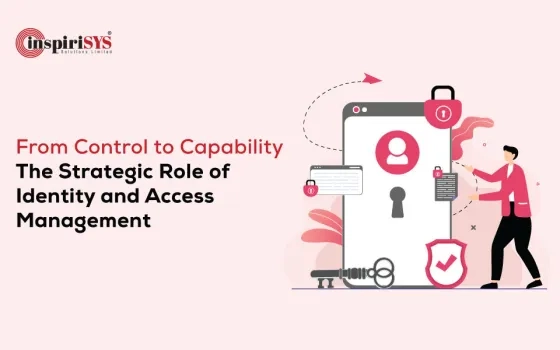When talking about IoT securities — smart homes are the hot new trend that is completely changing the house security situation’s face. It is a revolution in people’s life. The internet of things has made life much simpler and hassle-free. The world is now in a gold rush of the internet of things. Tech tycoons are launching products that are entering our homes, offices, and cars. The webcams, digital assistants, motion sensors, and much more play a big part in making your life easier. Here are eleven IoT securities that are must-have for your smart devices.
Our inter-connectivity world.
Though internet-connected devices make lives a cakewalk, many fail to understand that all the connectivity is a two-edged sword. The security tradeoffs in IoT are not paid attention to by many. Let’s look at how your IoT has a second life — and how to handle this and cut it out.
What is the Internet of Things (IoT)?
IoT refers to physical objects embedded with sensors, software, and other technologies that connect and exchange data with other systems over the internet. These things range from ordinary household objects to the industrial tool.
The importance of IoT now extends across; multiple sectors, including:
Consumer applications: This comprises consumer products such as smartphones, smartwatches, and smart homes. These can be used to control everything from air conditioning to door locks.
Business sector: The internet of things used by businesses ranges from smart security cameras to trackers for vehicles, ships, and goods to sensors that record industrial data of machinery.
Government sector: You might wonder where the government uses IoT, but the IoT makes the government official’s work trouble-free. Few areas where the IoT plays a great role are wildlife tracking, traffic monitor, disaster alerts.
The number of IoT devices is surging to more than billions, and this number will not stop here. With the rise of internet-connected devices, one of the great concerns that are surfacing with users is security. As the devices are connected to the internet, it is open to threats worldwide, increasing the scrutiny of inherent security issues.
How your IoT makes you vulnerable?
Some hackers can enter your network through the most innocuous device connected to the network. Your smart devices, like smart TVs, smart locks, gaming consoles, smart thermostats, or anything, can be the gateway to your network. It provides the entry point for cybercriminals. They can access a lot of information like your daily routine, life status, or sensitive information like passwords or financial information. This will make you more vulnerable to cyber-attacks and other problems. The attackers can install malicious programs like malware, which renders your router inoperable and collects all the details from devices connected to the router. Smart home devices are more vulnerable because they have little or no built-in security.
Anecdote of an IoT attack
In 2016, the Mirai botnet compromised a huge amount of devices — all scammed by teenagers. A botnet is used to conduct large scale cyber-attack by combining the processing power of small devices. The Mirai botnet took down famous companies like Etsy, GitHub, Netflix, and Spotify. The Mirai mainly attacked older routers and IP cameras and launched a DDoS attack. The out of date versions and easy credentials was the prey to this malware. To prevent your devices from cyber-attack, practice the following steps to make it more secure.
Another massive attack in 2010 is using the Stuxnet worm, a sophisticated computer worm that hunts down specific machinery used in the nuclear industry. These viruses commenced the attack in 2006 but executed a mass play in the year 2009. The viruses targeted the control system and the data acquisition systems and infected the instruction to the machinery. Therefore it is imperative to understand that the internet of things is open to attack at any level.
Vulnerabilities that puts you at the risk
Though we cannot stop the hackers and cybercriminals from performing the attack, the best thing you can do is take some measures. To establish the right security measures, we can be safe and secure from these hackers’ curbs. But to understand this, first, you have to understand the security vulnerabilities that invite breaches and crimes to your home or organization.
- Weak, guessable, or hardcoded passwords
- The insecurity in-network services
- The insecure interface ecosystem
- Lack of up-to-date mechanism in the devices with the latest software
- Use of components that is out of date or insecure
- There is no enough privacy.
- Overlook the transfer and storage of data
- Default settings that grant permission to unnecessary
- Lack of physical measures
IOT Securities You Must Have
1. Make sure your device secure by design
Before purchasing an IoT device or solution, make sure it is secure by design. If the provider cannot supply the adequate details, reconsider going for a particular device or solution. You should also make sure that the manufacturer provides timely patches and updates for the device all along its lifetime. The timely patches and updates for the device keep it up to date with the latest trend at that time.
2. Name your router
Change the name of your router from the one that is given by the manufacturer. The manufacturer provided name is used to identify the model of the router. The router’s name has to be unusual and not associated with your personal information like your name or address. The name of the router should not be a personal identifier.
3. Know your network and connected devices
The moment your device connects to the internet, it becomes vulnerable right at that point. With more and more devices connected to the network, it becomes tough to keep track of it. To be secure, you have to know about the network, the devices connected to it, and the type of information the devices can access. If the devices have apps featuring social sharing, select the permissions carefully.
4. Use strong encryption
Your router should have a strong encryption method. Don’t use the public WiFi networks or one that doesn’t have a reliable encryption protocol. Use the latest encryption standards like WPA2 instead of WEP or WPA. Installing updates and timely patches helps in having a minimum level of risk.
5. Use a strong password
The first main thing to do while installing a device is to change the default passwords. The cyber attackers might already know the default passwords and usernames of the IoT device. If the device doesn’t allow you to change the password, then consider a different one. Second, use a strong password and username that cannot be easily identified. Ditch the passwords like “password” or “123456.”
The password should be a combination of lower case, upper case, numbers, and special characters. Also, make sure that you change your password and username frequently.
6. Check the settings of your devices
Usually, the smart devices come with default settings that might be insecure for your device. The worst thing is that some devices won’t allow changing these settings. The things that have to be checked based on settings are weak credentials, intrusive features, permissions, and open ports.
7. Install firewalls and other security solutions
The security gateways stand between your IoT devices and network. They have more processing power, memory, and capabilities than IoT devices. You can install more powerful features like a firewall to prevent hackers from accessing your IoT devices. The firewall systems block unauthorized traffic over the wire and run IDS or IPS that is an intrusion detection or intrusion prevention system to scrutinize the network system.
To make your job easier you can use vulnerability scanners to unveil the security weaknesses within the system. You can employ a port scanner to identify the open ports.
8. Use a separate network
If you are running a big enterprise, then this tip is for you. Using a separate network for smart devices apart from the business network for the IoT devices is one of the most strategic approaches to ensure IoT security. When segmentation is in place, even if the hackers lure the way into the IoT devices, they can’t get hold of your business data or sniff the bank transfers.
9. Make sure that universal Plug and Play (UPnP) is off
The Universal Plug and Play is a set of network protocols that allow network devices to discover others’ presence seamlessly. But the same has rendered the possibility of exposing you to hackers outside more easily. The UPnP comes as a default setting on many routers nowadays. So check the settings and disable this feature if you don’t want to compromise on security for the sake of convenience.
10. Implement physical security
If you have the privilege of controlling the smart device with a phone, then be double-cautious that you don’t lose your phone. Have protection like Pin, password, or biometric on the device. In addition to this, make sure that you can erase your phone remotely. Have automatic backups in place or selective backups for the data that are important.
11. Increasing consumer awareness
Many consumers overlook security while purchasing an IoT device. The users have to be aware of the latest security measures that have to be enabled for protection. As a user, you have to be aware of updating the default credentials and software update application. Beware of the security threats that are happening around.
Bottom line
Despite the risks, it is no brainer that the internet of things has a mammoth potential. It has made day to day chores easy like a smart kettle. But the best experience is when these devices are completely secure. By adopting the necessary security measures, you can enjoy the benefits of the devices without any lag to its fullest.
Sources/References/Author: Priya Goswami


















